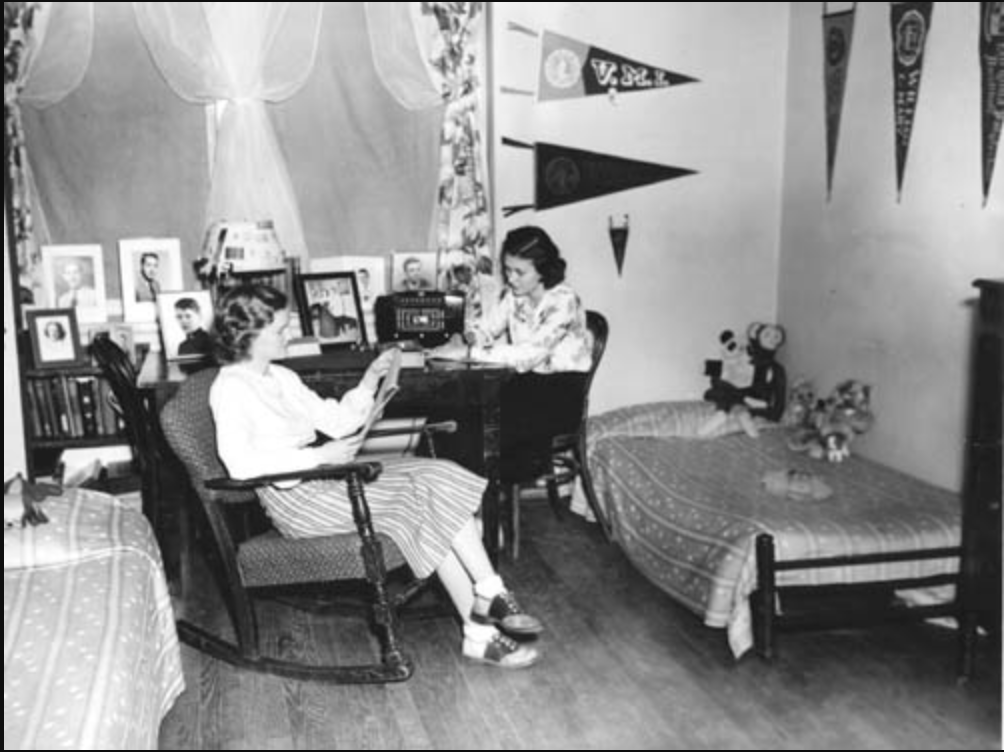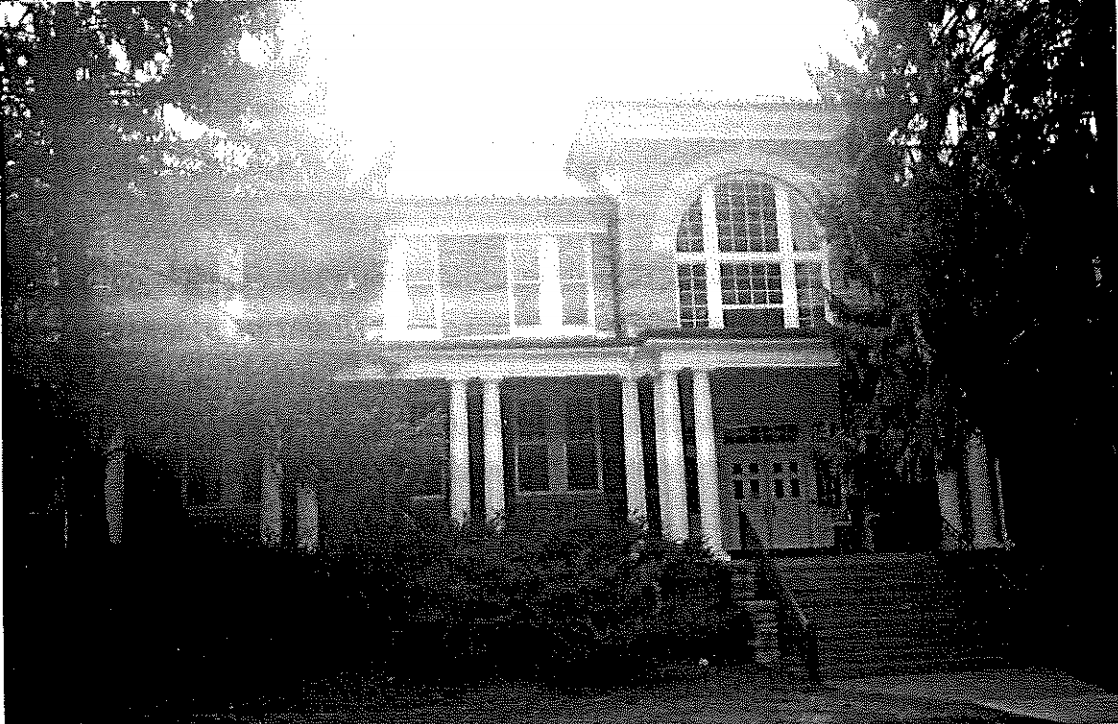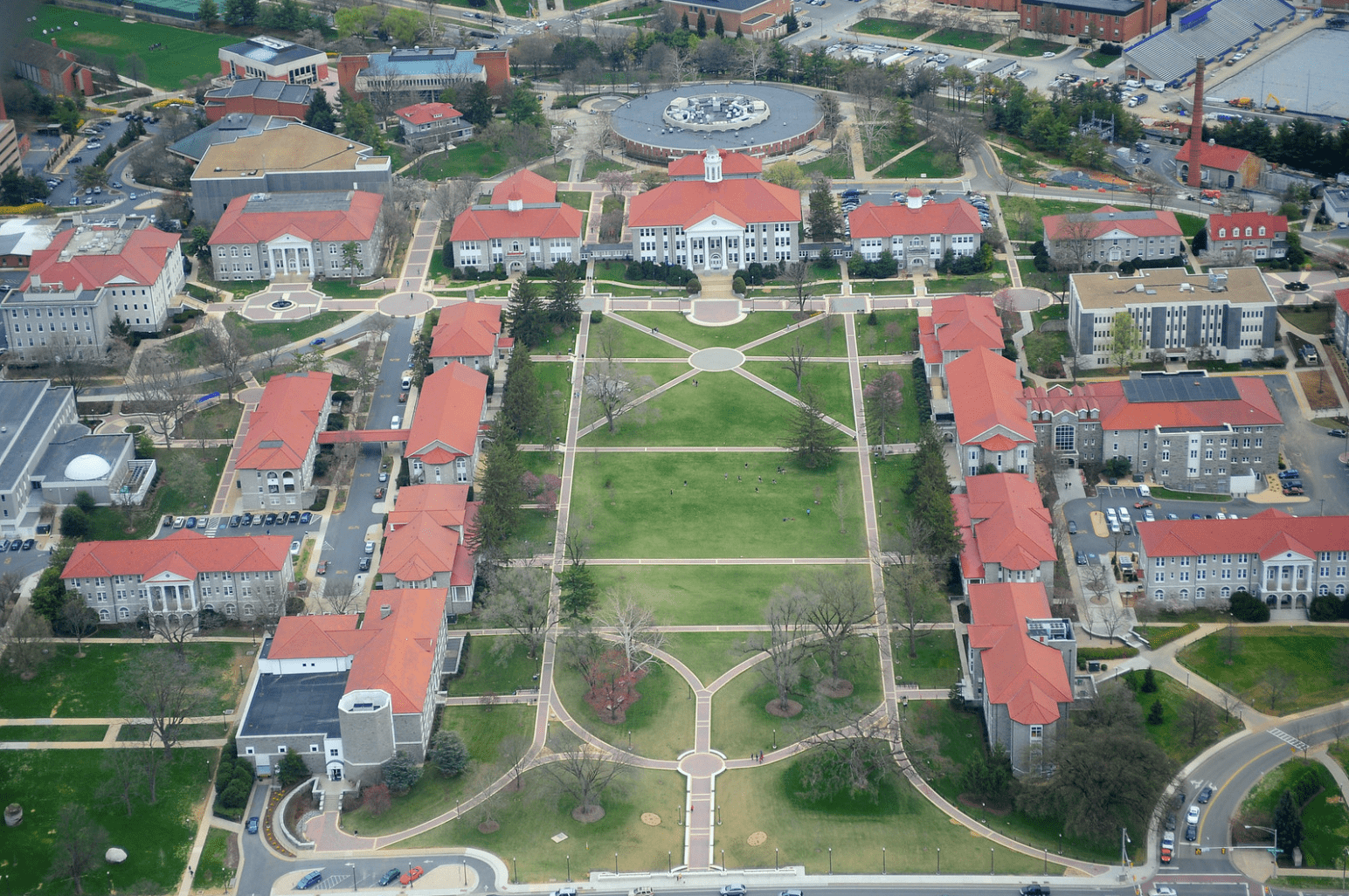
Ashby Hall, built in 1911, was one of the first few buildings constructed on campus when the early institution was known as the State Normal and Industrial School for Women at Harrisonburg. It was initially called Dormitory No. 2 and housed the influx of female students who were eager to attend the new school for professional teacher training in agriculture and other rural arts. Coeducational living was not permitted on campus until 1973, with the opening of Shorts Hall (Learn more here). In addition to accommodating housing for the growing number of students, Ashby Hall also had a basketball court and gymnasium for student use.
The campus’s second dormitory was renamed in 1917 to commemorate Turner Ashby, a Confederate general and commander of the 7th Virginia Cavalry during the Civil War who died in battle just a few miles south of Harrisonburg in June of 1862. Ashby served under the command of general Thomas J. “Stonewall” Jackson (commemorated with JMU’s Jackson Hall) and was famed by many as the “Black Knight of the Confederacy” and an honored combat hero in the Shenandoah Valley.
The renaming of Ashby Hall was part of the Restoration period following the war when the Lost Cause ideology began to dominate the retelling of Civil War memories, and the trend was to memorialize key Southern generals. This movement brought new interpretations of the war that were nostalgic of the South’s role in the war, despite losing it. It was falsely asserted that the war was fought over the South wanting to seceded — not over slavery — and that the South fought bravely, even though unmatched against the North’s gross abundance of resources and soldiers. This idolizing of Confederate soldiers and the reassertion of white supremacy continued with the naming of buildings after important Southern figures from the war, like Ashby Hall for Turner Ashby, during the Reconstruction period following the Civil War. It was a way for the South to avoid having to accept defeat by commemorating their war efforts and was largely accepted by most white Americans for reconciliation between the North and South.
Learn more about The Lost Cause here.
The name remains, as does much of the exterior structure and detailing as when Ashby Hall was first built. The basement of of the hall has since been renovated, now functioning as an assessment lab for computer-based testing for students to use during school hours and to be reserved by faculty for group use. Other updates have been made to the interior for accessibility purposes, like an elevator to access the lab if needed. The integrity of Ashby Hall has been maintained by being preserved for over a century. It is a part of the Quad’s Bluestone aesthetic that is significant because it was built with limestone found locally in the Shenandoah Valley region that JMU embodies. The history of Ashby Hall and the Quad as a symbolic space that highly values education and that serves as a place where students can gather as Dukes. This is what the institution is prided on, and is why the university has prioritized keeping its tradition alive. The functionality of the Quad, however, is undergoing continuous improvement as the campus expands more and more, with modifications for increased accessibility in and around the buildings, like better walkways across the Quad and the bike rack outside of Ashby Hall. The Quad is committed to the adaptive reuse of each building’s interior, like the addition of a computer lab in Ashby Hall, to accommodate more progressive demands of a twenty-first century university, while the diversity of the physical campus beyond the Quad reflects the growing diversity of the JMU population and values.




